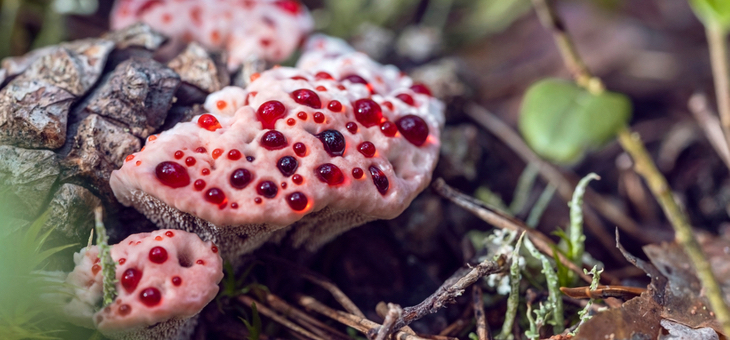The last six months have reawakened people’s curiosity and passion for plants. Whether it be showing the vegie patch some love or dancing around in circles when the devil’s ivy in your bathroom grows a new leaf – which I may have done – our appreciation for the growing world has been renewed.
Why not take the next step and dive into the weird and wonderful world of extraordinary plants?
A warning to any budding gardeners out there who still think that growing your own carrots is the pièce de resistance of the natural world; these exotic plants may just blow your mind.
Candy cap mushrooms (Lactarius rubidus)
Where: US Pacific Northwest and Northern California
These mushrooms have a sweet-smelling scent and taste like maple syrup when cooked. They grow in the coastal pine and oak forests of Northern California and Pacific Northwest. If you want to sample the flavour for yourself, a number of local ice-cream shops and bakeries have taken to making treats with these unusual mushrooms.
Gympie-gympie (Dendrocnide moroides)
Where: Queensland, Australia
Known as the ‘giant stinging tree’, the gympie-gympie is one of the most venomous plants in the world. Brushing against the fuzzy-looking leaves releases a neurotoxin that can make you feel as though you have been burnt by acid. For this reason, it is also known as the ‘suicide plant’. Exposing large areas of your body to the neurotoxin is thought to be painful enough to cause a heart attack or make the victim wish they were dead. If that wasn’t bad enough, these plants can still hurt you from beyond the grave. That’s right, even their dry leaf litter can cause excruciating pain.
Bleeding tooth fungus (Hydnellum pecki)
Where: Europe, Korea and US Pacific Northwest
This is definitely one of the more terrifying plants to look at. When this fungus is young, its surface is smooth, making it look like human skin. A dark red sap oozes from below the surface, making the fungus look like it is bleeding. Creepy, right? Well, while the fungus may look disturbing, the sap actually contains antibacterial and anticoagulant properties. It grows symbiotically with the trees that grow above it, helping them to better absorb nutrients.
Pale pitcher plants (Sarracenia alata)
Where: US Gulf Coast and Southeast
These slender green plants with their funny little lids look like something made up in a fairy tale. A Grimm fairy tale, that is. The open green ‘pitchers’ on these plants actually act like stomachs, luring in and then eating unsuspecting flies, bugs and ants. They contain digestive enzymes that break down the insects for food.
Sensitive plant (Mimosa pudica)
Where: Central and South America
Also known as the ‘shy plant’ or ‘shame plant’, this curious plant closes its leaves when touched. Stranger still, these plants have shown signs of memory and learning. In London’s Kew Gardens, where millions of visitors touch the leaves of sensitive plants each year, they have stopped closing when touched, learning that pesky visitors aren’t any real danger.
Corpse flower (Amorphophallus titanum)
Where: Sumatra, Indonesia
The plants scientific name is derived from Greek, meaning ‘giant misshapen penis’, and it’s no wonder why. The phallic, central column of flowers can grow up to nine feet tall. These plants only bloom for 48 hours every five to 10 years and smell strongly of rotting flesh when they do.
This video from the Chicago Botanic Garden shows the rare event of a Corpse Flower blooming.
Stinking corpse lily (Rafflesia arnoldii)
Where: Sumatra, Indonesia and Borneo
Considered to be the largest single flower in the world, just one of these monstrous red blooms can weigh more than 11kg and grow to nearly a metre in diameter. Similar to its much taller cousin, the corpse flower, the stinking corpse lily smells strongly of rotting meat when in bloom.
Would you travel to catch a glimpse of these exotic plants up close and personal? Which of them sound the most intriguing and repulsive to you?
If you enjoy our content, don’t keep it to yourself. Share our free eNews with your friends and encourage them to sign up.
Related articles:
https://www.yourlifechoices.com.au/lifestyle/leisure/plant-craze-captivating-millions
https://www.yourlifechoices.com.au/health/news/plants-that-monitor-your-health
https://www.yourlifechoices.com.au/news/house-plants-that-remove-toxins

